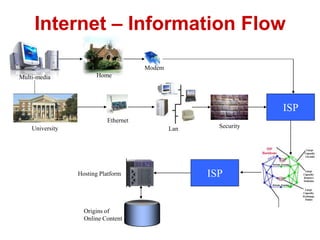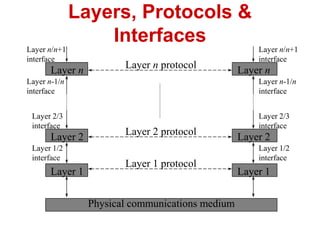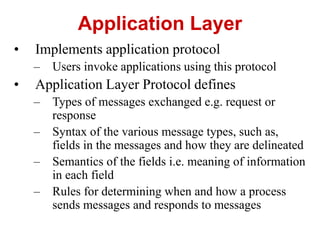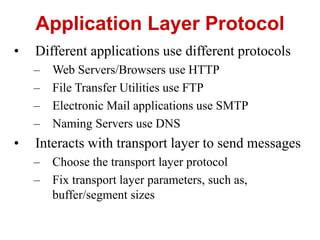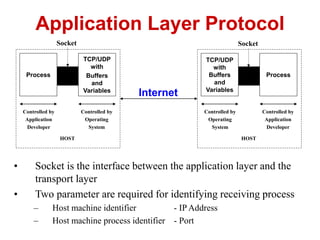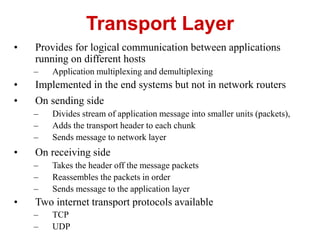The document provides an overview of the Internet including its key characteristics and components. Some key points:
- The Internet is a network of networks that connects any network as long as it conforms to certain naming conventions and runs the IP protocol.
- It has a hierarchical topology with end systems connecting to local ISPs which are connected to regional and national ISPs.
- It allows distributed applications to exchange data and provides connection-oriented and connectionless services.
- The layered architecture includes physical, link, internet, transport and application layers with standardized protocols at each layer.


